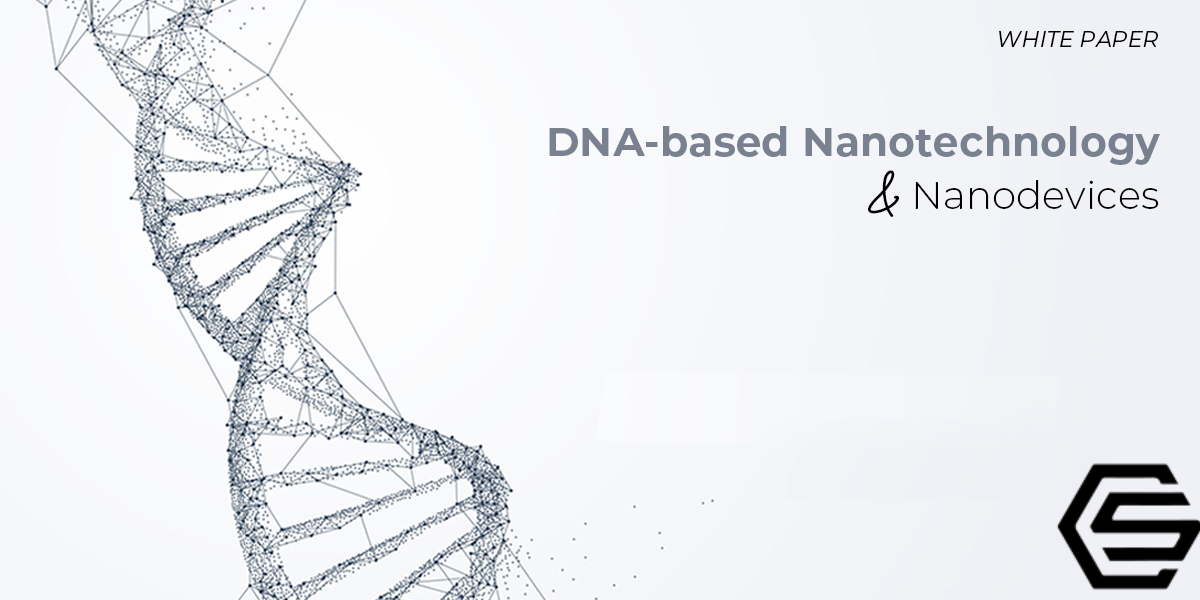Nanodevices allow us to take advantage of biological, magnetic, electronic, and mechanical systems' technological potential. Nanoparticles are used in the design and production of devices at the nanolevel. These nanodevices play a critical role in the semiconductor industry, and there is a growing demand for them.
Devices produced at the nanoscale have a greater impact on human health, energy consumption, environmental control, and many other areas. Designers, researchers, and end-users of nanodevices can utilize this classification to choose the best option for their needs. One of the popular nanodevices of the era is DNA-based nanostructures with outstanding versatility due to their programmable nature.
Introduction
DNA nanodevices are nanoscale structures constructed of DNA that function both structurally and functionally 1. They can act as scaffolds for more complex structures to emerge. In particular, as a promising branch of DNA nanotechnology, DNA origami technology is a viable technique for bottom-up manufacturing of well-defined shaped nanostructures2. DNA origami is the folding of DNA at the nanoscale to construct 2D and 3D shapes which are ranging from tens of nanometers to submicrometer 2,3. Blocks, flat squares and rectangles, rods, gears, large planar arrangements of repeated patterns such as hexagon shapes, and many other nanostructures can be generated with DNA origami 4. Aside from structure design, DNA is used to create molecular machines with a controllable molecular system that allows for complex movements. The dissociation and association of complementary DNA strands can be controlled reversibly by heating and cooling since the double-helical structure is generated by the hydrogen bonding of base pairs. This indicates that the dynamic management of the attachment and dissociation of DNA strands can be used to modify the molecular assembly of DNA strands 5. DNA origami synthesis has a higher yield, robustness, and capacity to form complicated non-periodic structures than tile-based DNA assembly procedures, which is due in part to the high cooperativity of many scaffolds–staple interactions during folding6,7.
DNA-based Nanotechnology and Nanodevices
DNA nanotechnology is now utilized to build nanoscale structures and functionalized materials, is also used in molecular mechanics and computation, as well as synthetic chemistry and biology, and it is still evolving to meet technological demands5,8,9. Formed structures provide a diverse engineering platform where nanoscale entities can be altered in a highly programmable way with proper chemical modification at specified spots on the sequences. DNA origami-based techniques, on the other hand, allow for large parallel fabrication (for example, 1012 copies in one operation4), both in solution and on a surface10. A highly programmable arrangement of atomic-scale discrete nanostructures, such as nanoassemblies in solutions, -or colloids- or patterns, metal, and semiconductor nanoparticle assemblies with prescribed heterogeneity, anisotropy, and/or chirality, is generated using the nanofabrication approach11–13. Tunable optical or electronic properties, such as tuneable conductivity, plasmon coupling, and plasmonic chirality, are possible with DNA origami-templated nanostructures with high structural programmability at the nanolevel and hold great promise for applications in nanophotonics and nanoelectronics14,15. Moreover, DNA origami provides different ways to produce complex nanoelectronic modules and devices along with allowing the shaping and arrangement of materials16.
One of the main goals of DNA nanotechnology is to develop molecular machinery and motors that can not only switch between states when they detect an external change but can also be gradually fuelled along a closed state route and cause change17,18. This change may either be potential or kinetic. Utilizing DNA origami products as drug delivery carriers is one other emerging application because DNA is biodegradable and has low toxicity19,20. Also, several therapeutic agents such as drugs, enzymes, nucleic acids, antibodies, and small interfering RNAs can readily interact with DNA21–25. Moreover in biophysical and bioimaging applications, DNA origami structures can be utilized as standards, markers, or structural support for molecules of interest, allowing for the control and measurement of molecular stoichiometry and collective behaviour26–28. As the study of origami grows closer to applications, most researchers will be dealing with the intricacies of their application than with the refining of the method itself.
Conclusion
As a result, most future research will focus on addressing chemical needs particular to certain applications, such as making DNA origami chemically and physically stable and building molecular adaptors for functional components. It is clear that we will witness long-term solutions aided by DNA-based nanodevices in areas of advanced nanomaterials, drug discovery/delivery, sensors, energy storage, computation, and even data storage.



















